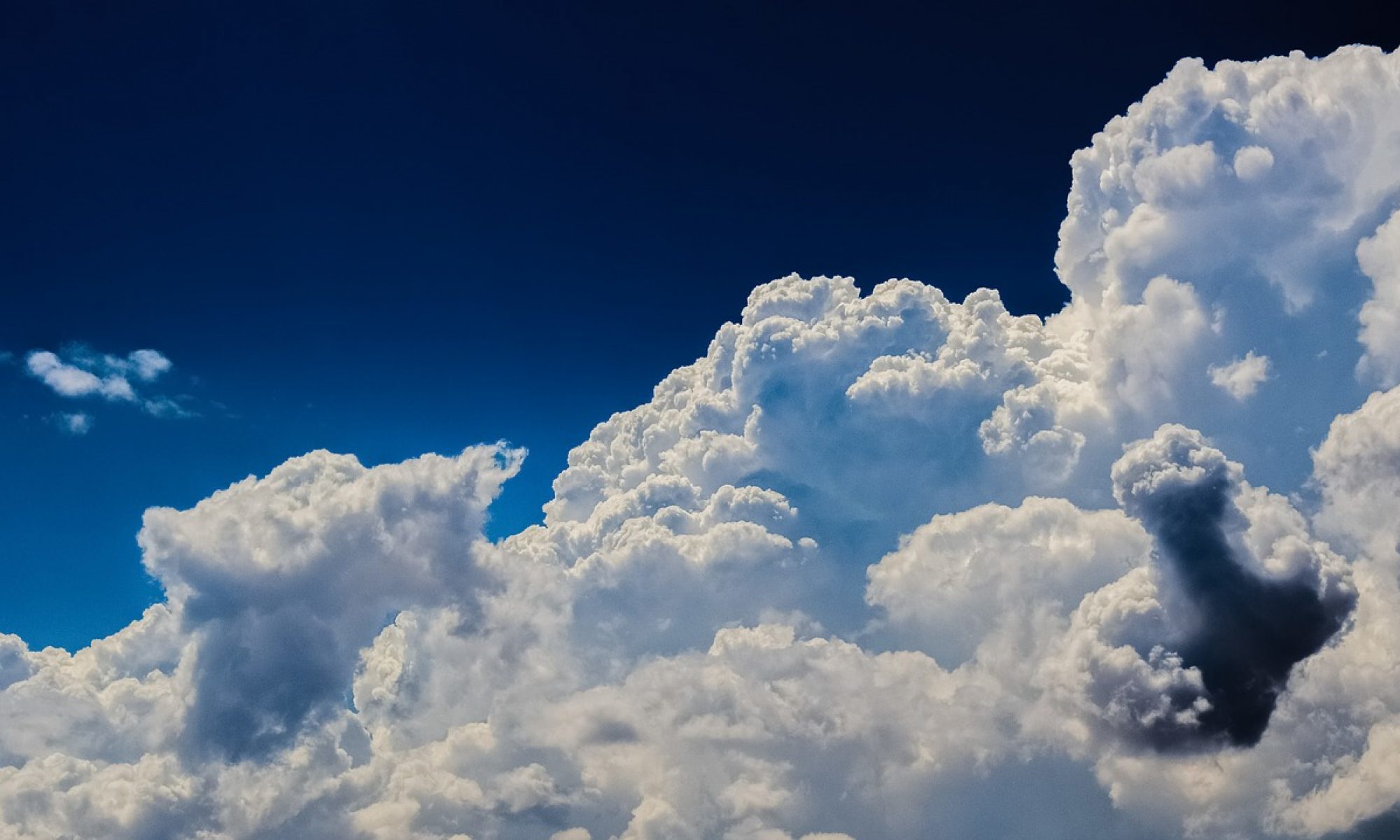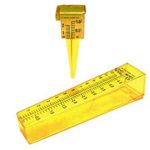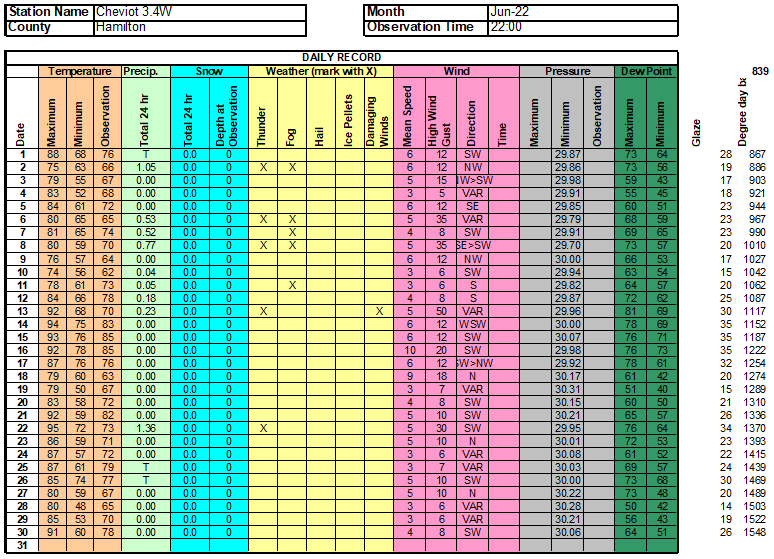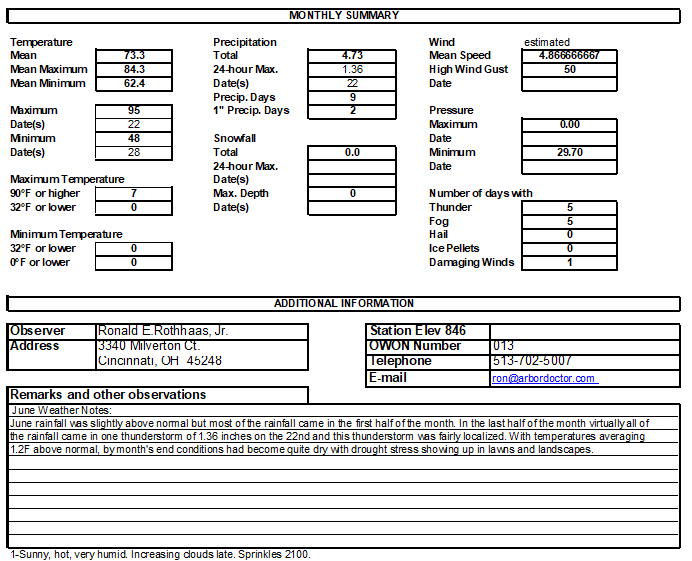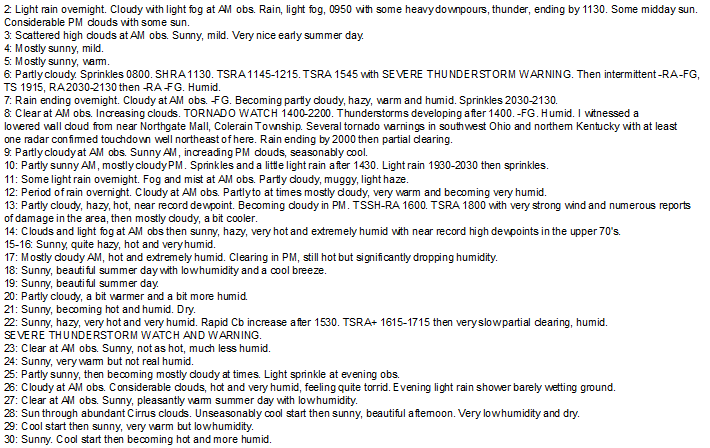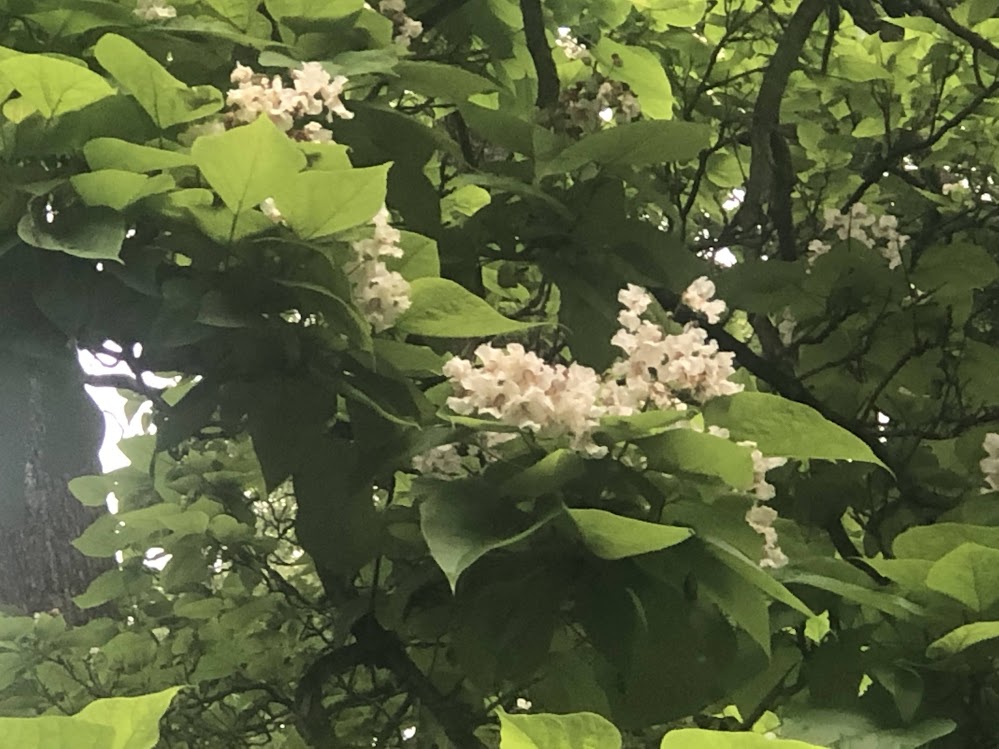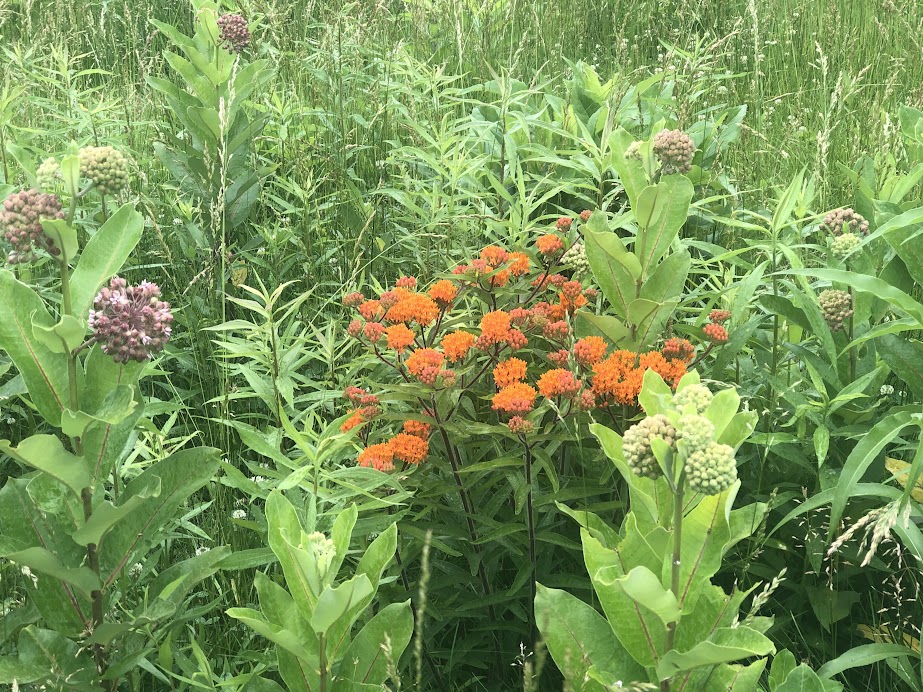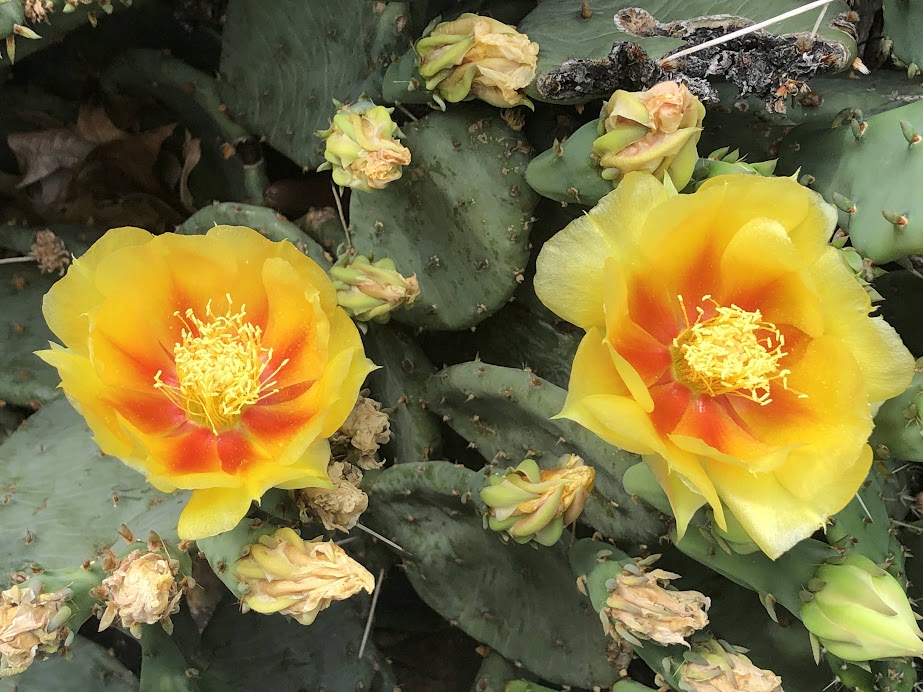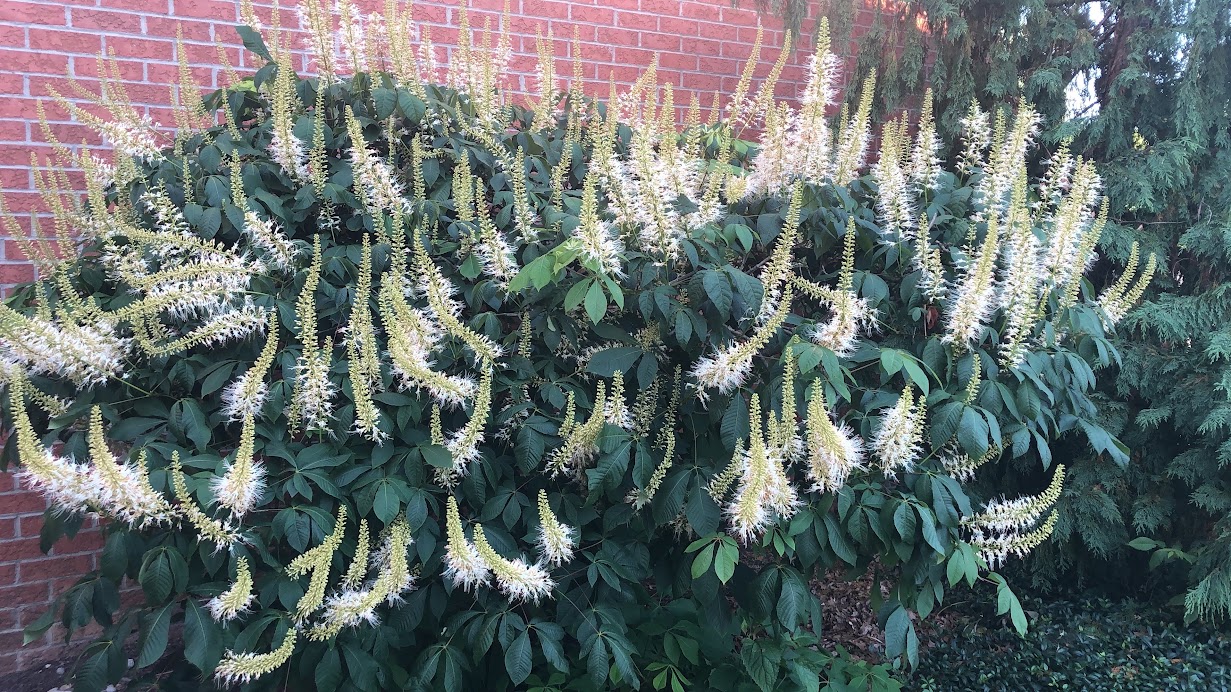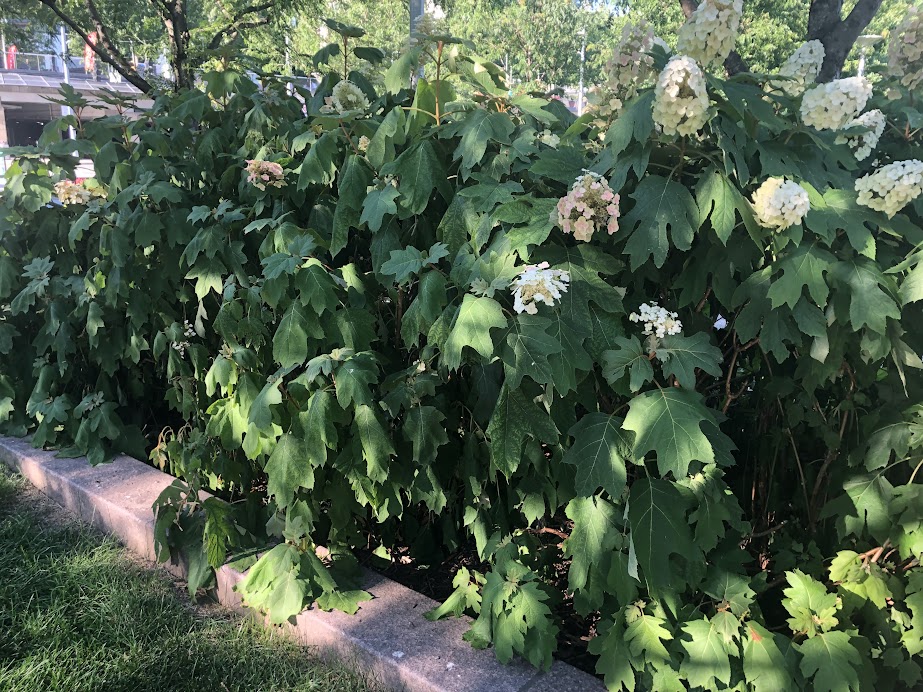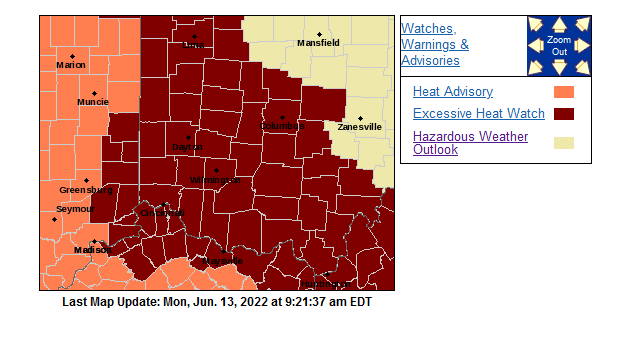
I don’t have to tell you that it’s hot this week with near record heat and tropical humidity. The National Weather Service is warning of dangerously hot conditions with heat index values up to 109 possible from Tuesday afternoon through Tuesday evening. The heat wave will continue for much of the week. Extreme heat and humidity will significantly increase the potential for heat related illnesses, particularly for those working or participating in outdoor activities.
Proper watering of trees, shrubs, and other landscape plants is important during this time, especially with new trees and shrubs. Don’t assume plants need water just because it is hot. The soil was wet as of this past weekend. Many plants have new foliage which is not yet acclimated to the heat. Check the soil before watering. Leaves may wilt in the heat of the day even though soils are moist. If soils are moist and the plants perk up at sunset, there is no need to water. In fact, watering plants with already wet root systems can harm or kill them.
Watering every day may work out in Florida where there are sandy, quickly drained soils but it is a killer here in our Cincinnati clay soils.
Please remember to water…correctly!
Water once per week, one inch per week, under the entire branch spread, in the absence of rain, May through November. Either rainfall or your watering should equal the one inch per week. Do not water if the soil is already moist. It may be necessary to water newly planted trees and shrubs more often in this heat wave but check the soil first! Put out a sprinkler and a straight sided soup can or rain gauge and measure one inch per week. Measure the rainfall which falls in your yard. Your trees don’t care what fell at the airport!
If burlap was left on new trees, it will repel water and the tree or shrub may die. Be sure burlap and twine are removed from the top of all root balls. If your landscaper disagrees, refer him or her to the American National Standards Institute (ANSI) industry standard for installation of landscape plants.
To the extent possible recycle fallen leaves back into the soil around the trees and maintain mulch around the trees to a radius of at least 3-5 feet. Keep mulch off trunks. Use a coarse textured mulch. Avoid triple shredded mulch. Aged arborist wood chips, mulched and composted leaves, pine bark, and pine straw are all good. Very finely ground mulches such as triple ground hardwood mulch are not beneficial and may inhibit moisture and oxygen exchange.
Drought: How Dry Seasons Affect Woody Plants >>>
>>>
